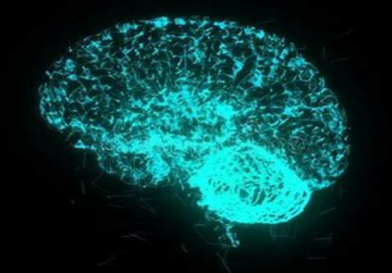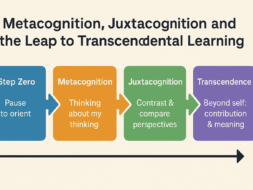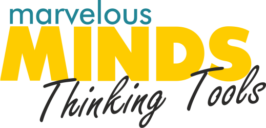Did you know the brain's Mothership of all Thinking and a computer's microchip have more in common than generally understood?
Did you know that we are already at the Fourth Education Revolution?
Did you know that both the brain's hardware and software is upgradable?
Neuroplasticity poses a direct challenge to traditional education methods that rely heavily on memorization, repetition, and standardized testing. These approaches often ignore the brain’s need for stimulation, exploration, and meaningful connections. Instead of fostering adaptability and critical thinking, traditional methods can stifle creativity and limit students to surface-level understanding.
By contrast, neuroplasticity-driven education embraces the brain’s natural learning processes. It encourages teaching methods that are interactive, problem-based, and tailored to individual learning styles. This approach not only makes learning more engaging but also significantly enhances retention and comprehension, as students are actively involved in the learning process.
In a rapidly changing world, education must evolve to meet the needs of learners who think, process, and adapt differently than previous generations. At the heart of this evolution lies the concept of neuroplasticity—the brain’s remarkable ability to rewire itself in response to new experiences, learning, and challenges. Neuroplasticity isn’t just a buzzword; it’s a transformative understanding of how our brains work, and it fundamentally challenges traditional education methods that often fail to consider the brain’s dynamic nature.
Aligning Education with the Thinking Tools Cutting-Edge Cognitive Science
Incorporating neuroplasticity into education aligns teaching practices with the latest findings in cognitive science. Research consistently shows that active learning—where students are directly engaged in their education through discussion, application, and hands-on experiences—leads to stronger neural connections and deeper understanding.
Thinking Tools don’t teach content; they teach students how to think, analyze, and connect ideas, fostering a mindset that is agile and responsive to new information. This aligns perfectly with neuroplasticity, as students aren’t just absorbing information; they’re reshaping their cognitive architecture to become more effective learners.
What is Neuroplasticity?
Neuroplasticity refers to the brain’s ability to change and adapt by forming new neural connections throughout life. Unlike the outdated belief that the brain is fixed after a certain age, we now know that learning can continuously reshape the brain’s structure and function. This adaptability is the key to acquiring new skills, recovering from setbacks, and improving cognitive functions. In essence, neuroplasticity is the brain’s way of upgrading itself—enhancing both its “hardware” (neural pathways) and “software” (thinking patterns).
Why Neuroplasticity Matters in Education
Traditional education systems often operate under the assumption that learning is a one-way process: teachers impart knowledge, and students receive it. This model views the brain as a passive vessel rather than an active participant in learning. Neuroplasticity flips this outdated model on its head. It emphasizes that the brain is not just a recipient of information but a dynamic, self-improving system that learns best through engagement, challenge, and reflection.
Understanding neuroplasticity means recognizing that every student’s brain is constantly evolving, capable of remarkable change and growth. This insight shifts our focus from rote memorization and passive learning to active, experience-driven education that taps into the brain’s inherent ability to adapt.
Why This Matters for Educators, Parents, and Policymakers
For Educators: Understanding neuroplasticity empowers teachers to move beyond one-size-fits-all instruction. By recognizing that each student’s brain is unique and adaptable, educators can create more personalized, engaging learning experiences that cater to diverse needs. This shift from instructor to cognitive guide transforms the classroom into a dynamic environment where students are actively shaping their own learning journeys.
For Parents: Emphasizing neuroplasticity reassures parents that their child’s potential is not fixed. It challenges the notion of innate intelligence by highlighting that effort, environment, and learning experiences play a significant role in cognitive development. This perspective encourages parents to support learning environments that foster curiosity, exploration, and resilience.
For Policymakers: The implications of neuroplasticity extend to educational policy and curriculum design. Policymakers have the opportunity to champion reforms that prioritize active, student-centered learning over standardized, test-driven approaches. By investing in teaching methods that engage the brain’s adaptive nature, policies can help create an education system that truly prepares students for the complexities of the modern world.
Neuroplasticity in Action: Practical Steps for the Classroom
To harness the power of neuroplasticity in education, here are some practical strategies that educators can implement:
Incorporate Active Learning: Design lessons that involve discussion, collaboration, and problem-solving. These activities stimulate neural pathways and encourage deeper cognitive engagement.
Thinking Tools foster critical and creative thinking that enables students to organize information whilst actively engaging their brains in making connections.
Thinking Tools embrace Mistakes as Learning Opportunities: Neuroplasticity thrives on challenge and adaptation. Encourage students to see mistakes as valuable learning experiences, which helps build resilience and fosters a growth mindset.
Thinking Tools is Personalize dLearning: Recognize that each student’s brain is different. Tailor learning experiences to individual needs and strengths, allowing students to explore subjects in ways that resonate with them.
The Future of Learning Lies in Understanding the Brain
Neuroplasticity offers a powerful lens through which to view and transform education. It reminds us that learning is not static but a dynamic, ever-evolving process that taps into the brain’s incredible capacity for change. By embracing this understanding, educators, parents, and policymakers can create learning environments that not only educate but also empower, paving the way for a future where every student has the opportunity to unlock their full potential.In a world that is constantly changing, the ability to adapt, think critically, and learn continuously is invaluable. Neuroplasticity is the key to this adaptability, offering a blueprint for an education system that evolves with its learners—one that recognizes the brain’s potential and nurtures it at every turn.







